If you’ve got a cat at home, you’ll know they often like getting in amongst your plants and maybe even having a little nibble on a few leaves or flowers. Whilst you might be a bit upset if your houseplants lose some leaves or blooms to a hungry or curious kitty, it’s even more important to pick houseplants safe for cats.
I’ve brought together a collection of my favorite and most beautiful houseplants that are entirely safe for your cat, regardless of whether they admire them from across the room, or like to snack on some leaves.
I’ve confirmed the safety of all these houseplants from the ASPCA Animal Poison Control Center. I’ve tried to include a variety of flowering and non-flowering houseplants that will bring joy and beauty to your home and live in harmony with your cat and the rest of your family.
Peperomia
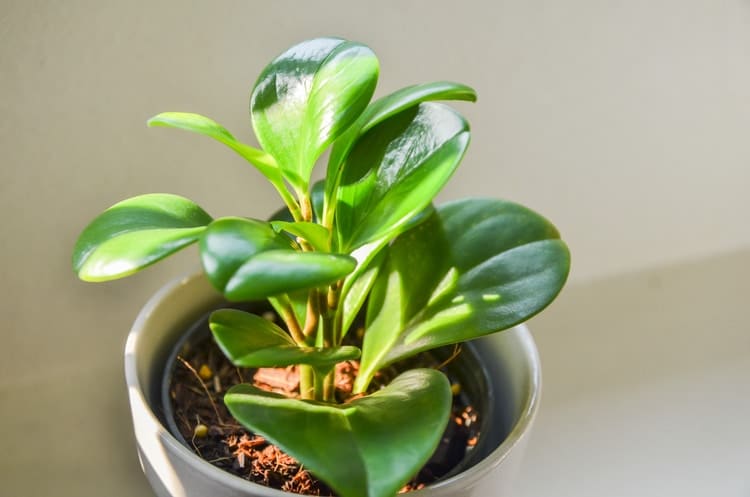
Peperomia is a large genus of over 1000 small perennial plants that make great houseplants. They are kept for their wonderful ornamental foliage, which comes in a variety of shapes, sizes, and colors.
Peperomia provide real interest to an indoor space, and most have succulent characteristics, meaning they will tolerate infrequent watering, making them a good option for the slightly less diligent gardener.
With no delicate flowers to damage, even if your cat was to take a nibble of some leaves, or be a little rough with it, it won’t spoil the wonderful look of these plants.
Some of the most popular varieties, and my personal favorites are the Peperomia caperate, Peperomia obtusifolia, Peperomia graveolens. Check out my article all about peperomia plant care.
Echeveria
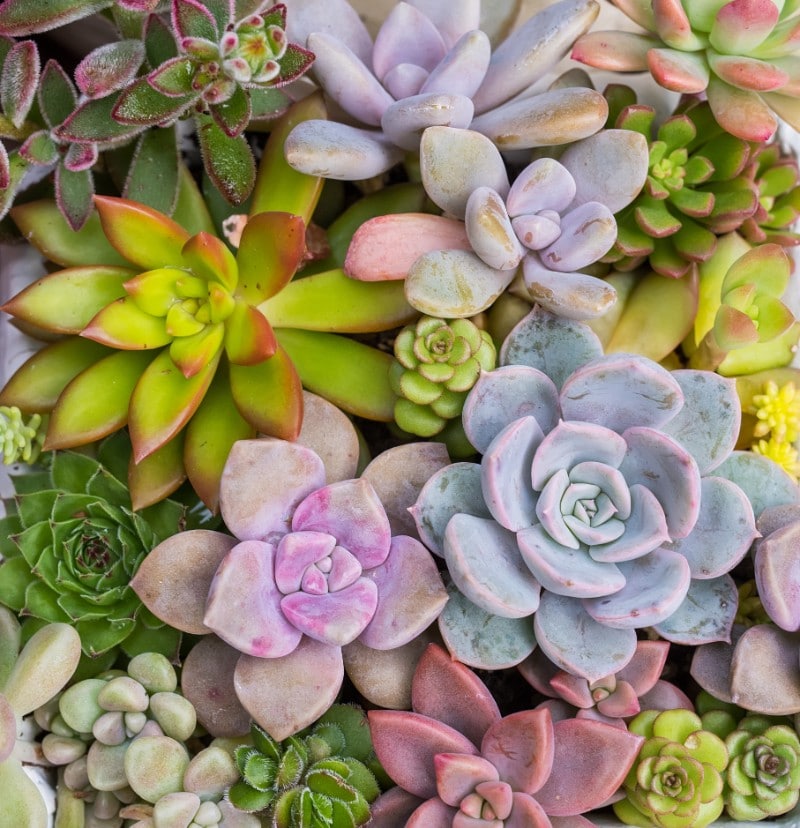
These compact succulents are beautiful and have such amazing variety. There has been a major resurgence in growing succulents at home, particularly in decorative arrangements in all kinds of containers.
Echeveria have quite high light requirements but are otherwise really easy to look after. They will still survive in lower light conditions but tend to become leggy. Even if they do become leggy, you can cut the tops off them and replant them to regain the desirable rosette shape that echeveria naturally have.
You can also propagate echeveria really easily from cuttings or leaves and it’s really rewarding to grow a whole collection of echeveria from just one or two plants. I’ve got more information on propagating echeveria here if you are interested.
When looking for houseplants safe for cats, look no further than echeveria. They are not only safe for cats but can also take quite a bit of abuse from a curious cat. Cats tend not to bother with echeveria, as they don’t have large wavy leaves that cats seem to like to play with and chew on.
Even if your cat has a nibble, they are harmless. Even a pot that is knocked over by your cat shouldn’t cause too much trouble, as the thick and fleshy leaves of the echeveria are so resilient that they are hard to damage much.
With hundreds of interesting echeveria of all different colors and shapes, this is a species that I could never get bored of. Look out for the particularly beautiful “Blue Prince”, “Perle von Nurnberg” and “Black Prince” cultivars. If you want to learn more, read my article about how to care for succulents indoors
Aspidistra (Cast Iron Plant)
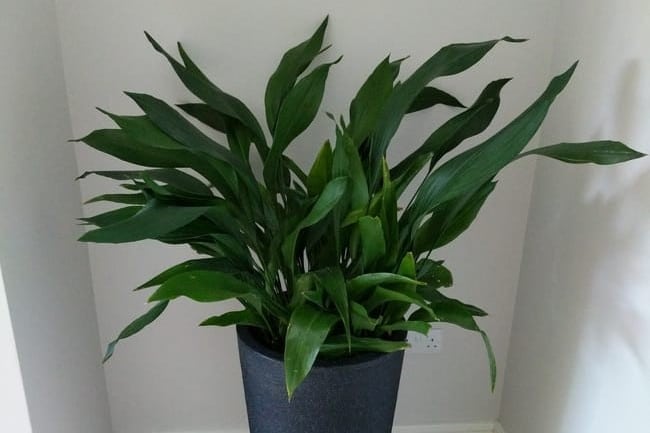
The cast iron plant is our next option as a great cat safe houseplant. Completely harmless to cats, whether they ingest or come into contact with the plant. They’re not known as the cast iron plant for no reason either. They are amazingly resilient to neglect and the foliage is as tough as nails. It would need to be some cat to do much damage to a cast iron plant.
Cast iron plants are ideal for low light locations in your house. The leaves become darker and more vibrantly green in low light conditions and they seem to thrive perfectly well.
My own cast iron plant is in my hall, where the only natural light comes from a skylight, that really only provides good light on bright sunny days. It’s probably one of the healthiest plants in my house despite this. Read my article all about cast iron plant care if you want to learn more about this awesome plant.
Phalaenopsis Orchid
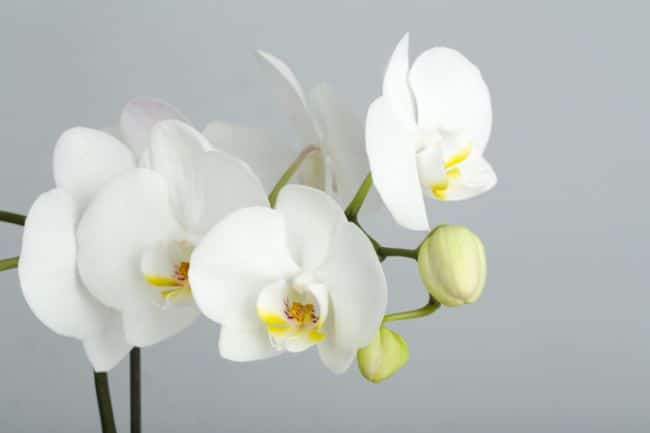
My all-time favorite houseplant for so many reasons, and one which is perfectly safe for your cat. There aren’t many houseplants safe for cats which have more beautiful blooms than the phalaenopsis orchid.
Phalaenopsis, or moth orchids, sell by the tens of millions every year and it’s no surprise why. They bloom for up to 4 months at a time and the blooms are numerous and jaw-droppingly beautiful.
Whilst the flowers of phalaenopsis orchids are quite delicate, and the flower spikes look like they could snap if they were looked at the wrong way, they are actually reasonably resilient and fairly easy to care for with just a little knowledge.
Phalaenopsis orchids are now really affordable due to the massive upsurge in commercial cultivation. Usually cheaper than a bunch of flowers, and with blooms that last for months, rather than a week or two, I think its well worth taking the risk of your cat doing a little damage to this plant.
Phalaenopsis orchids do well in the lower light conditions of most homes, unlike a lot of other orchid species. They only need to be watered once the potting media is dry and will cope well in the lower humidity conditions of most homes, although do best in 50% to 70% humidity.
Orchids will rebloom time and time again for decades if looked after correctly, so if your cat does a little damage to your orchid, you can pick a better location for it the next time it flowers. It might even be an excuse to get another orchid and build up your collection.
I have loads more information about phalaenopsis orchids on this website and have written a whole series of articles about caring for them. If you want to know more, check out the orchid section, or read more about phalaenopsis orchid care for beginners here.
Nerve Plant (Fittonia)
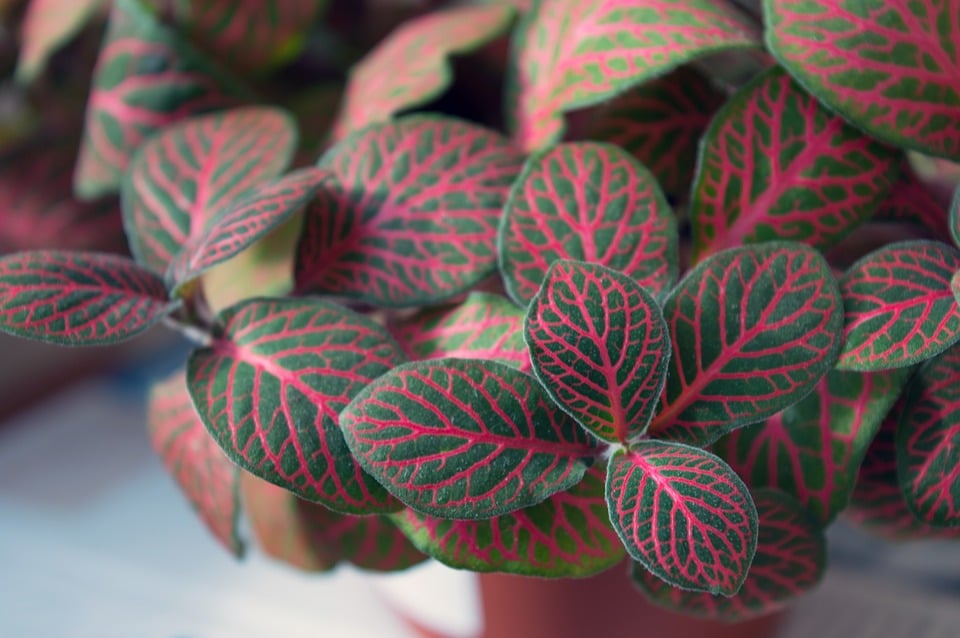
Nerve plants are ideal for terrariums, containers and windowsill gardening. They have stunningly beautiful foliage that is typically red, green or pink. They have characteristic veins on their leaves which contrast with the color of the leaves.
Such a beautiful plant deserves a place in every home, and they have been confirmed to be completely safe for cats, and in fact for dogs and humans too, so you needn’t have any concern about the safety of having this plant in your home.
Nerve plants thrive best in quite high humidity, so are particularly suitable as a terrarium plant. Terrariums are all the rage these days and are fun to build and maintain and can be a real statement piece in your home.
Nerve plants only grow to a maximum height of 50 cm usually, so are a good option if space is limited. You should keep nerve plants well watered, but you need to ensure well-draining soil to prevent root rot from the soil becoming waterlogged. Read more about nerve plant care here.
Wax Plant (Hoya carnosa)
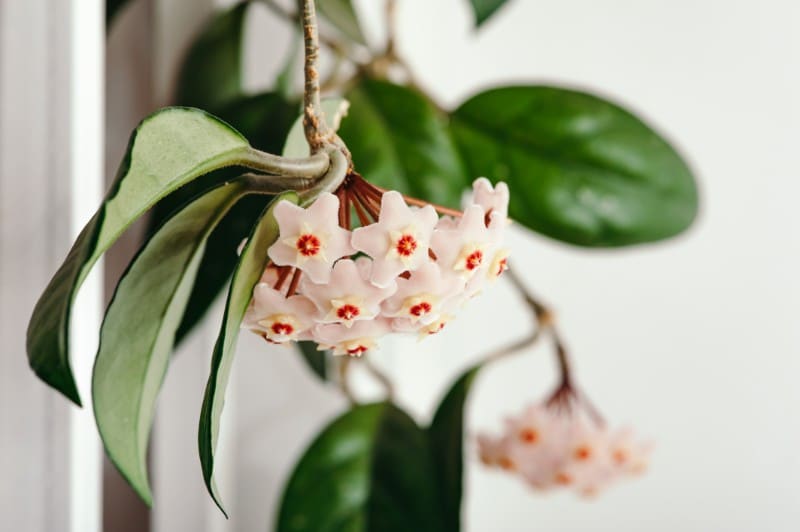
Hoya plants are an evergreen plant, that comes in a number of varieties, many of which are either climbing or trailing, so are a great option to train to grow up a trellis, wire, or to hang down from a planter.
They are resilient, succulent plants which produce some of the most exquisitely beautiful flowers that you will find in an indoor plant. They grow pendulous heads of waxy looking, five-pointed star-shaped flowers.
Take another moment to look at the picture above to see just how amazing these flowers are. They look almost surreal like they were delicately crafted with wax by a master craftsman. To add to the appeal, wax plants have a beautiful scent, which is most prominent in the evening.
Wax plants require bright light but don’t do well in direct sunlight. A north facing window is ideal. Moderate temperatures and regular feeding will bring out the best in your wax plant. If you’d like to learn more, read about caring for my favorite variant, the Hoya carnosa compacta here.
As for your cat, I can’t promise you they will leave the flowers of this one alone, but the flowers are numerous and the plant grows strongly, so you shouldn’t be too concerned if your cat takes an interest.
Prayer Plant (Maranta leuconeura)
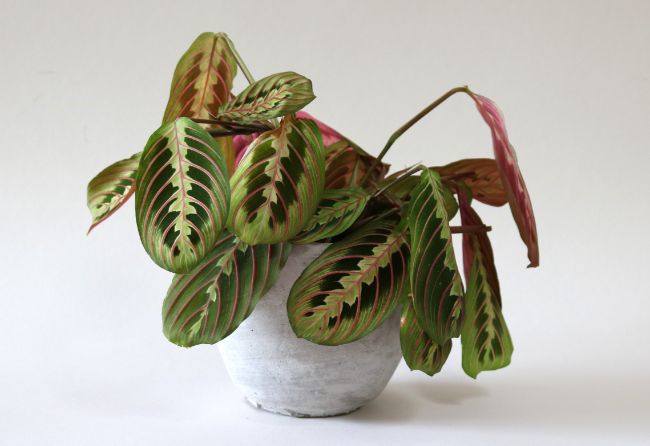
Moving on from a plant with exquisite flowers, to one with stunning foliage. The prayer plant is a great option to grow indoors due to beautifully decorated foliage and interesting features. The most common species of prayer plant is the maranta leuconeura, of which there are a number of interesting cultivars, all with variations in their foliage.
My favorite cultivar is undoubtedly “erythroneura“, which has well demarcated red veins on its foliage. An interesting feature and the reason prayer plants get their name, is that they fold their leaves upwards at night, as if in prayer. This can be really interesting to watch, as the shape and appearance of your plant changes dramatically over the course of 24 hours.
It is believed prayer plants developed this ability to prevent water from gathering on their leaves in the cool of night, where the prolonged standing water would predispose them to fungal and bacterial disease.
Prayer plants thrive in moderate temperatures of 65°F to 75 °F and bright, but indirect sunlight. Well-draining soil is essential and take care to avoid overwatering. Get these aspects of care right, and you can enjoy the beauty of this plant for a long time to come. Your cat will be perfectly safe to interact and explore the interesting foliage of the prayer plant without risk of harm.
Zebra Plant (Haworthiopsis Fasciata)
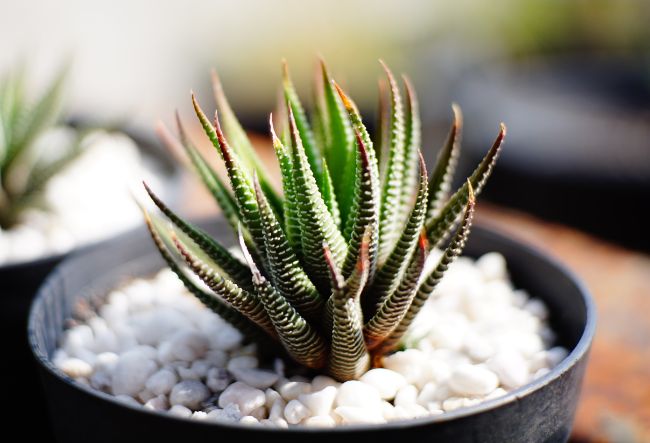
Being a compact, succulent plant, Haworthia are tough and will tolerate less delicate treatment really well. They are compact, rarely growing to more than 20 cm in height. Even the odd rough treatment from your cat won’t bother the zebra plant. Another really good option for a succulent arrangement in a quirky container, or just for growing on a bright windowsill.
Zebra haworthia, like many other succulents, will produce offsets which can be propagated easily, so your collection can grow quickly. This can help you grow a few reserve plants in case some are given rough treatment by your cat.
The main thing to be careful with haworthia fasciata is to avoid overwatering. Water thoroughly, then let the soil dry out completely before watering again. Another tip is to pot it in a fairly small container relative to the size of the plant. The lower ratio of potting media to plant roots will reduce the risk of overwatering by letting the potting media dry out faster.
Parlor Palm (Chamaedorea elegans)

Parlor palms are slow growing, low maintenance and a good option for indoor areas with lower light. They look best in a group, which helps them look bushier and more attractive, counteracting the natural growth habit, which is to grow up straight, which can leave a solitary plant looking a little bare.
Parlor palm is a houseplant which is both safe for cats and also safe from cats. It isn’t going to be troubled in the least by having your cat around, and even if they like to play with the appealingly draped palm fronds, your cat wont do too much damage to the plant.
Areca Palm (Dypsis lutescens)
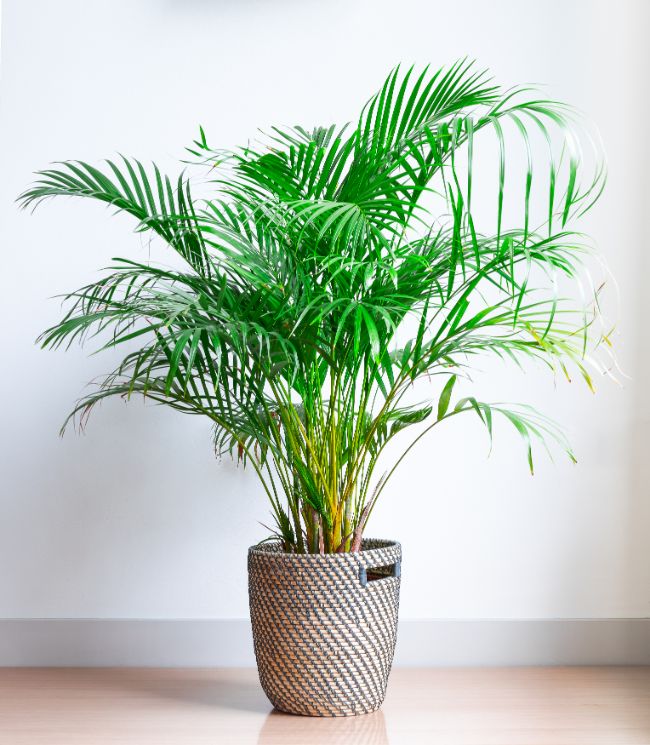
The second palm on this list is the elegant and slender Areca palm, which grows in a cluster of tall stalks with feathery fronds. It is another low maintenance option, and suitable for low or medium light conditions in your home.
Areca palms are fairly slow growing, and mature plants can be quite expensive. Opting for a smaller plant is more affordable and is a good option as a tabletop plant. Full-grown, Areca palms will grow to about 6-8 feet tall in most indoor spaces, growing about 6 inches per year.
Another plant which will tolerate a playful kitten or adult cat alike and won’t cause your cat any harm whatsoever. Definitely my favorite indoor palm and one I would recommend as an attractive houseplant safe for cats.
Check out my article about Areca palm care which goes into all the detail you’ll need to grow and care for this awesome plant.
African Violet (Saintpaulia)
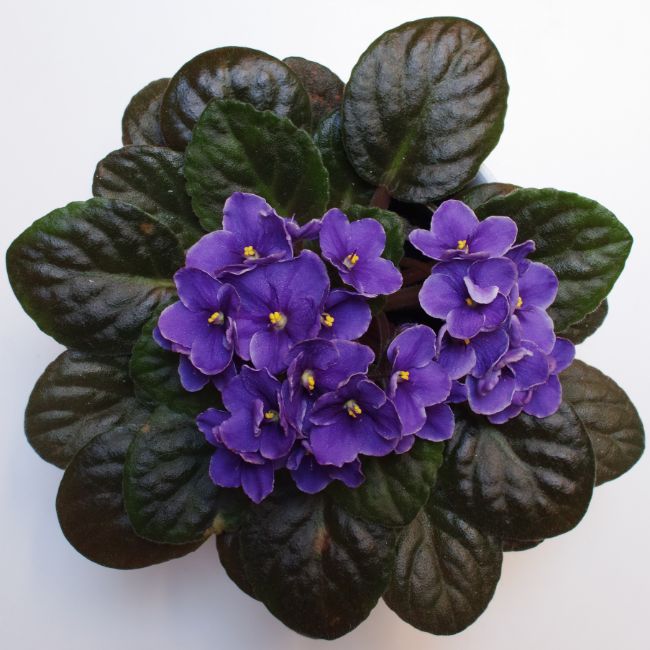
Not the easiest of indoor plants to keep in good condition, but entirely suitable and safe for cats. african violets are persistently popular as a flowering houseplant due to the beauty of their blooms, and keeping them in good condition can be very rewarding.
I’d recommend potting your african violet up in a specific african violet potting mix, or make your own from, following these specific instructions. african violets can be a bit of a nightmare to get the watering right, so pay close attention.
Water using room temperature water that has been allowed to sit for 48 hours to let the chlorine and chloramine evaporate and take care to avoid getting foliage or flowers wet. Alternatively, use rainwater or distilled water. You need to take care to neither leave african violets in waterlogged soil or to dry out, as both are really detrimental.
Bright, indirect light is ideal and you should turn the pot frequently to avoid your plant reaching for the light. Fertilize your african violets with a high phosphorus fertilizer, to promote healthy blooms.
By the time you have perfected your care of african violets, you’ll be wondering how you ever had time to own a cat. But seriously, african violets wouldn’t be so popular if they weren’t such a pleasure to grow and enjoy, so why not give one a go.
Staghorn Fern (Platycerium)
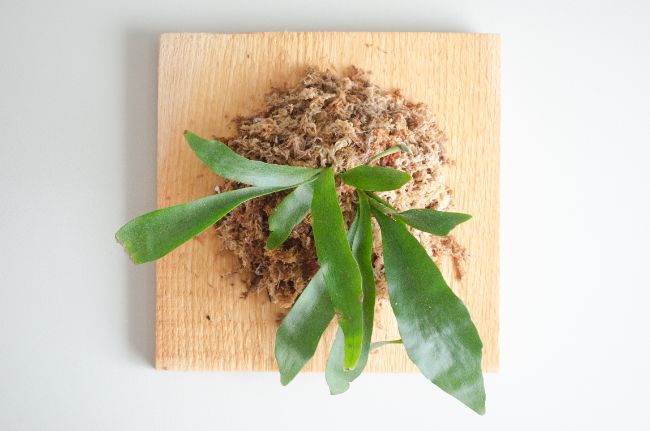
It’s not hard to see where the staghorn fern got its name, with the distinctive foliage on this interesting houseplant. They can be grown outside in warm climates, but are more popular as an indoor plant. Totally safe for your cat to interact with, they have versatility in where they can be placed in an indoor space.
Staghorn ferns are epiphytic plants, meaning they do not naturally grow in soil, rather they grow attached to trees, with their roots being used as an anchor. The best way to grow a staghorn is mounted to wood, or in a really loose potting medium such as orchid bark mix.
They generally need quite high light levels, and this is one of the reasons staghorn ferns can sometimes struggle in indoor conditions. It’s a tough balancing act though, as they need bright light, but not too much if any direct sunlight. It might take you some adjusting the position of your staghorn fern to get things just right.
Staghorn ferns like to be kept evenly moist, and will absorb water through their leaves as well as their roots. They will likely need watered about once per week, depending on the potting media.
Make sure to water all parts of the plant each time to maximize water absorption. A good misting of the leaves every few days is also a really good idea to keep your staghorn fern in top shape. Fertilizing a few times per year is plenty for staghorn ferns.
Spider Plant (Chlorophytum comosum)
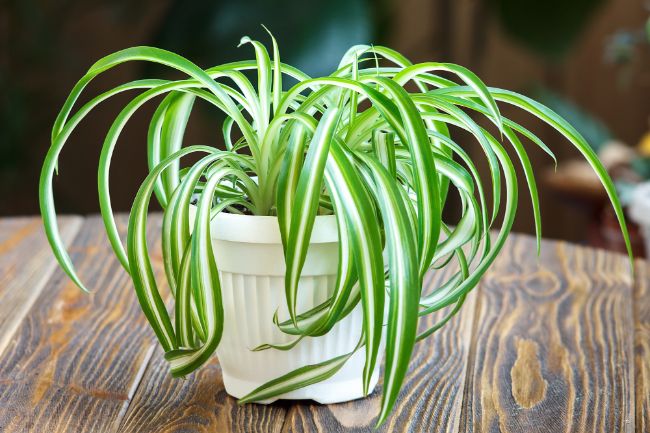
Spider plants have to be one of the most common, low maintenance and adaptable houseplants you can choose. Not as showy or as obviously beautiful as some of the other options on this.
However, they are interesting and bring a good splash of green into an indoor space and they are tough and resilient. Perfectly safe for cats, and so easy to care for, you could probably delegate the gardening duty to your cat.
Well-draining soil, bright, indirect light, and not too much water and you will keep your spider plant perfectly happy. Spider plants will tell you when they are happy by producing plenty of little offsets which can be separated and propagated with easy.
Air Plants (Tillandsia)
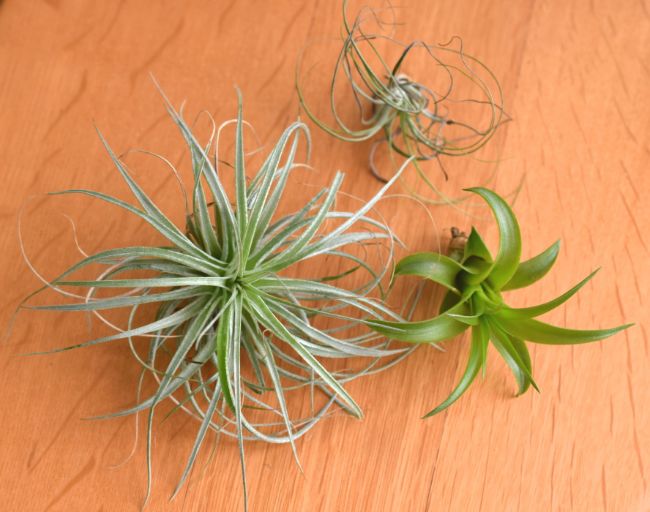
Xerographica air plants are a great option to start an air plant collection, as they thrive in the drier conditions found in many of our homes, unlike some other species of air plants.
Xerographica air plants also tolerate higher levels of light than some other air plants. Place your air plant in really bright light, without too much direct sunlight and water once per week by submerging it in water.
After watering, shake the excess water off the plant and ensure you dont leave it in direct sunlight when drying, as this can easily cause sunburn to the plant.
Tough and durable, and due to being another epiphyte, there are so many options to place and mount xerographica air plants. A good option, and very fashionable to be grown in an open terrarium. Totally safe for your cat, and unlikely to be damaged by rough treatment. A good starter houseplant due to their ease of care, but be warned, collecting air plants can be wildly addictive.
Boston Fern (Nephrolepis exaltata)
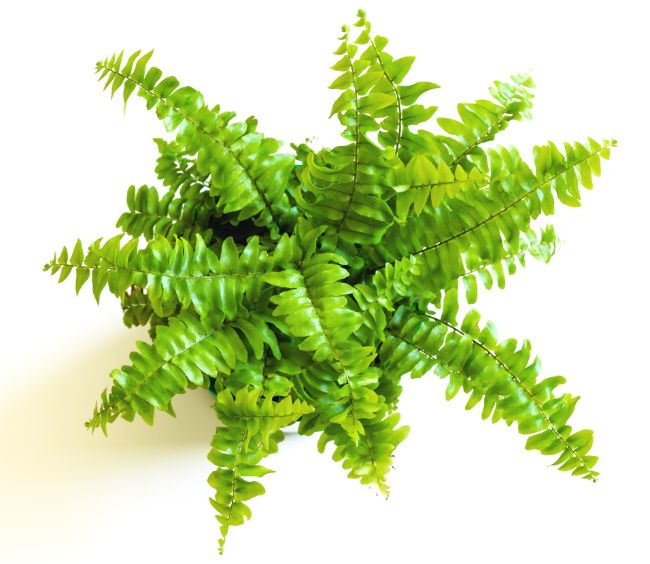
Boston ferns make a great first impression in any indoor space with their feather-like foliage and long arching fronds. Boston ferns are particularly popular in hanging or wall mounted containers, where the fronds can drape elegantly over the sides, but can, of course, be planted in a normal container and are very versatile.
Similar to many indoor plants, bright, indirect light is ideal, so avoid dark corners or direct sunlight from a south-facing window. Boston ferns like moist soil most of the time, so a well-draining, but moisture retentive soil is a good option. Achieve this with a peat moss based medium, with added perlite, to ensure sufficient drainage.
Humidity requirements are quite high, so get your mister at the ready, or think about putting yours in a well-lit bathroom.
The foliage of boston ferns can be quite intriguing for cats, so expect them to show some curiosity, but rest assured they are totally safe for cats to interact with.
Christmas Cactus (Schlumbergera bridgesii)
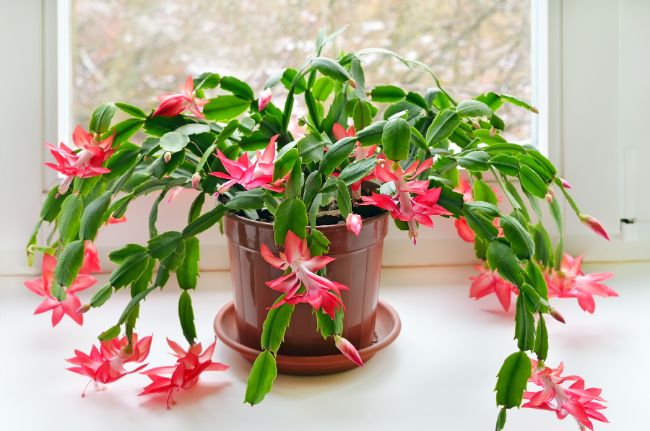
Not what might immediately spring to mind when you say the word cactus, but trust me that they are. Sharing some key similarities, but many difference to their cousins, the desert cacti, Schlumbergera are a variety of jungle cactus. Named the Christmas cactus due to the fact that they flower around the holidays.
One of the most popular winter flowering houseplants, Christmas cactus is something a bit different and is sure to brighten up your home. Whilst many people only keep a Christmas cactus until it has finished flowering, they are not too hard to care throughout the year and can be encouraged to rebloom year after year with some simple care tips.
They will thrive in normal indoor conditions and can handle the lower humidity conditions found in many of our homes. Plenty of water is needed during active flowering and growth phases but cut well back in their dormancy period before the next round of blooms.
I find cats are often quite attracted to the Christmas cactus, and mine always seems to get a bit beaten up, but as long as my cat is ok, then I don’t really mind too much. Christmas cactuses are to be enjoyed, and as long as both me and my cat are having fun, then I’m happy to keep my Christmas cactus around.
Of course, placing your Christmas cactus somewhere relatively out of reach of your kitty might be an option, but cats do have a way of getting to most locations, so it may not be worth trying.
Ponytail palm (Beaucarnea Recurvata)
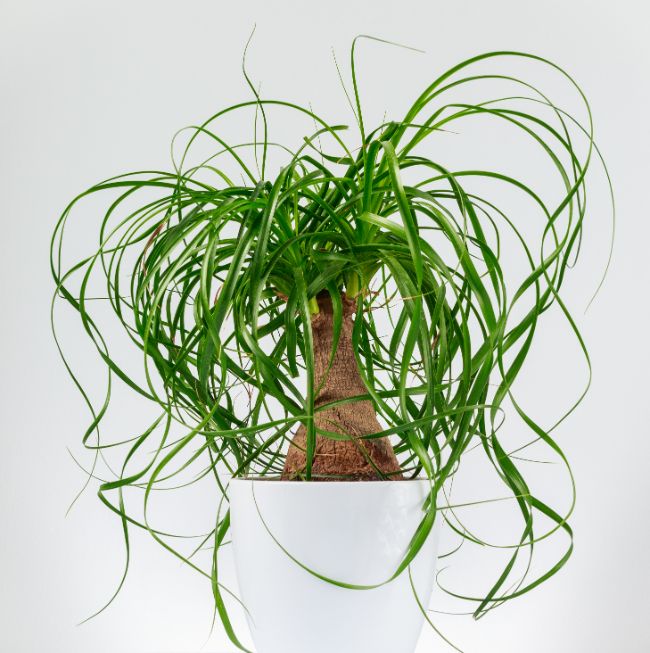
The Ponytail palm (Beaucarnea recurvata) is a wonderful cat safe houseplant that looks great, and your cat will also love it. The curving leaves may be a little too tempting for your kitty to avoid playing with, but your cat will be perfectly safe.
Ponytail palm is not in fact a palm, but is actually a type of succulent. This makes it an easy care plant that will tolerate a little neglect and be relatively maintenance free.
I hope you have enjoyed this rundown of my favorite houseplants safe for cats. The good news is that there are loads to choose from, so your indoor space needn’t be lacking some greenery or some beautiful blooms, even though you have a cat to care for.
Check out the ASPCA Animal Poison Control Center if you want to browse their list of plants that are safe for cats and also the ones that are toxic and should be avoided.





